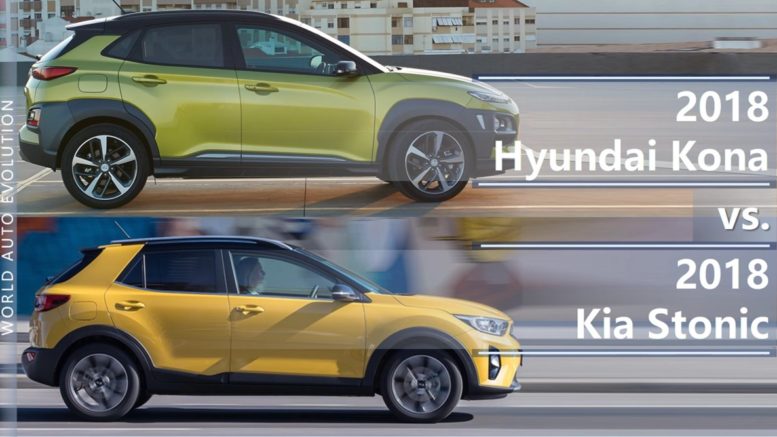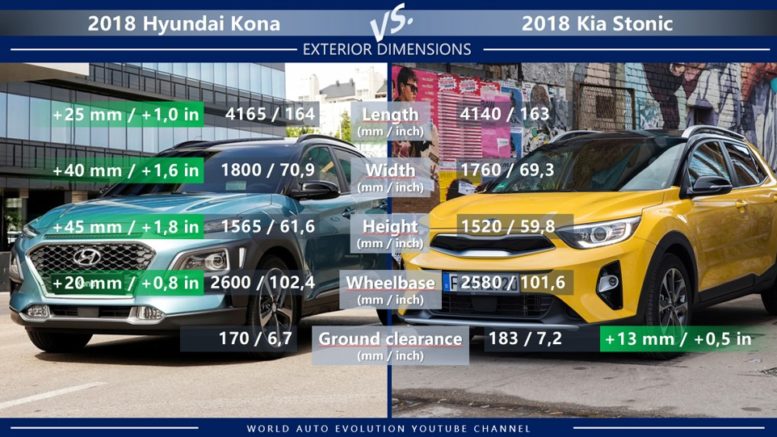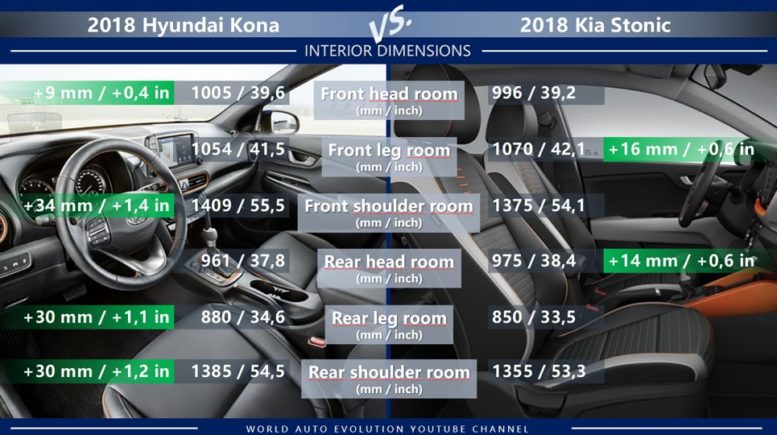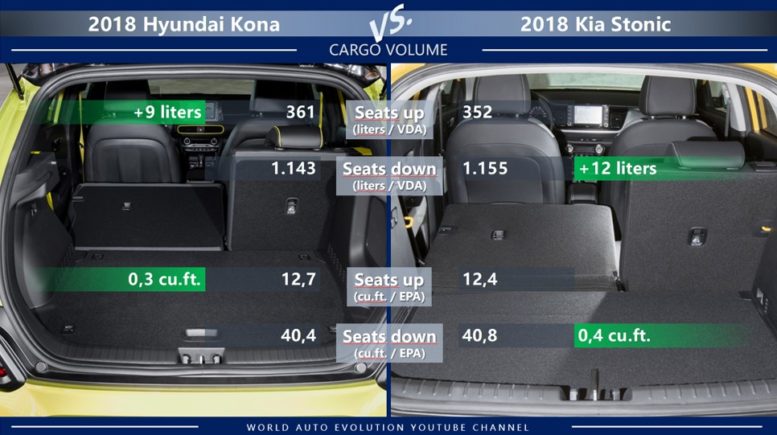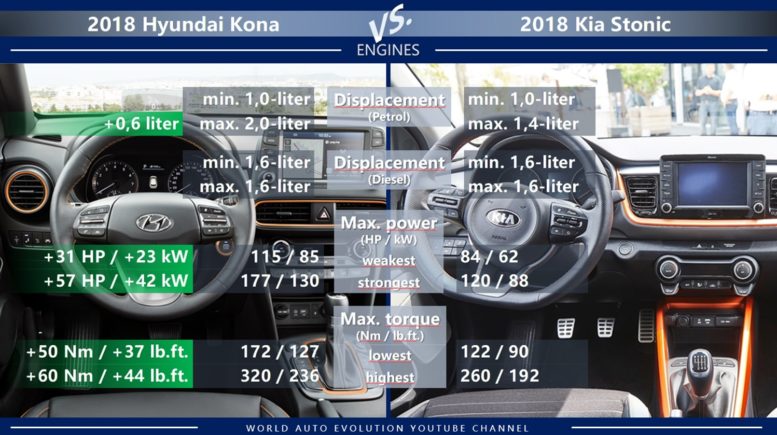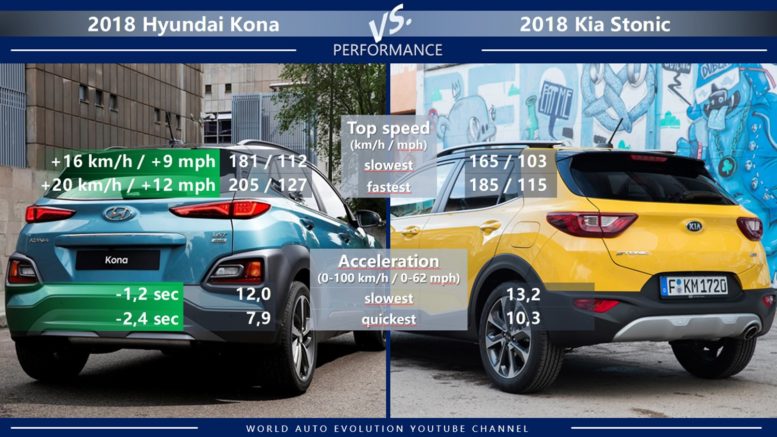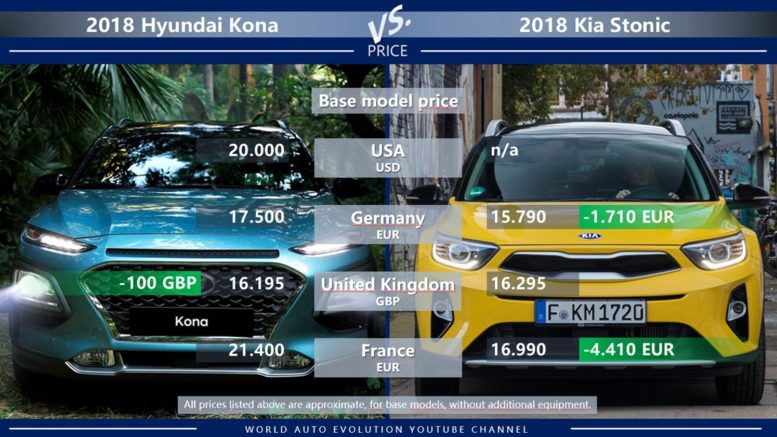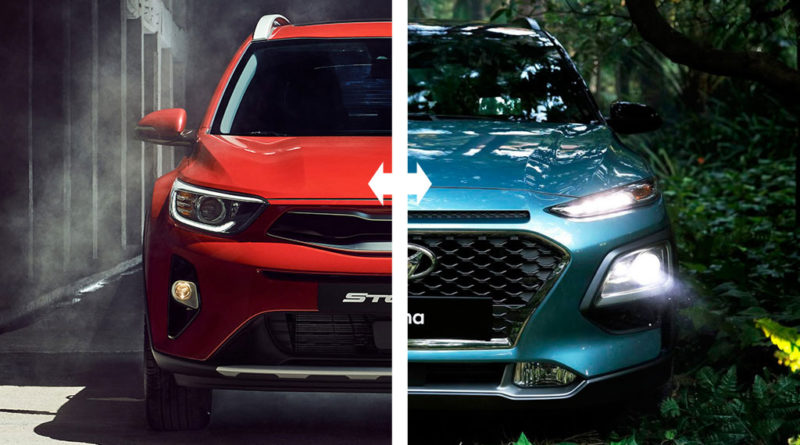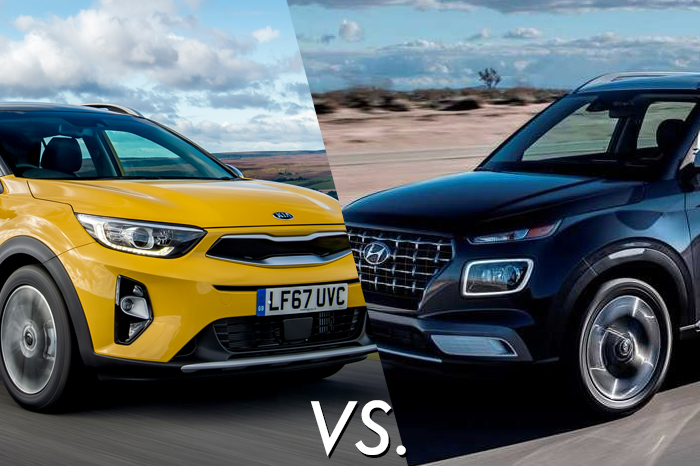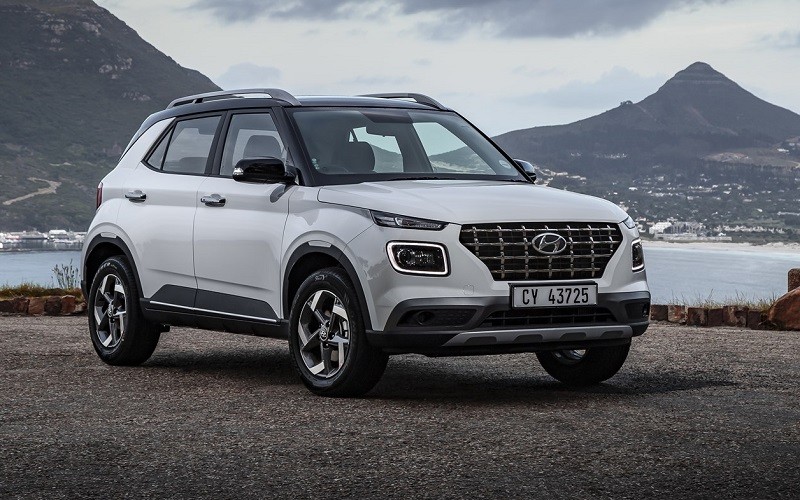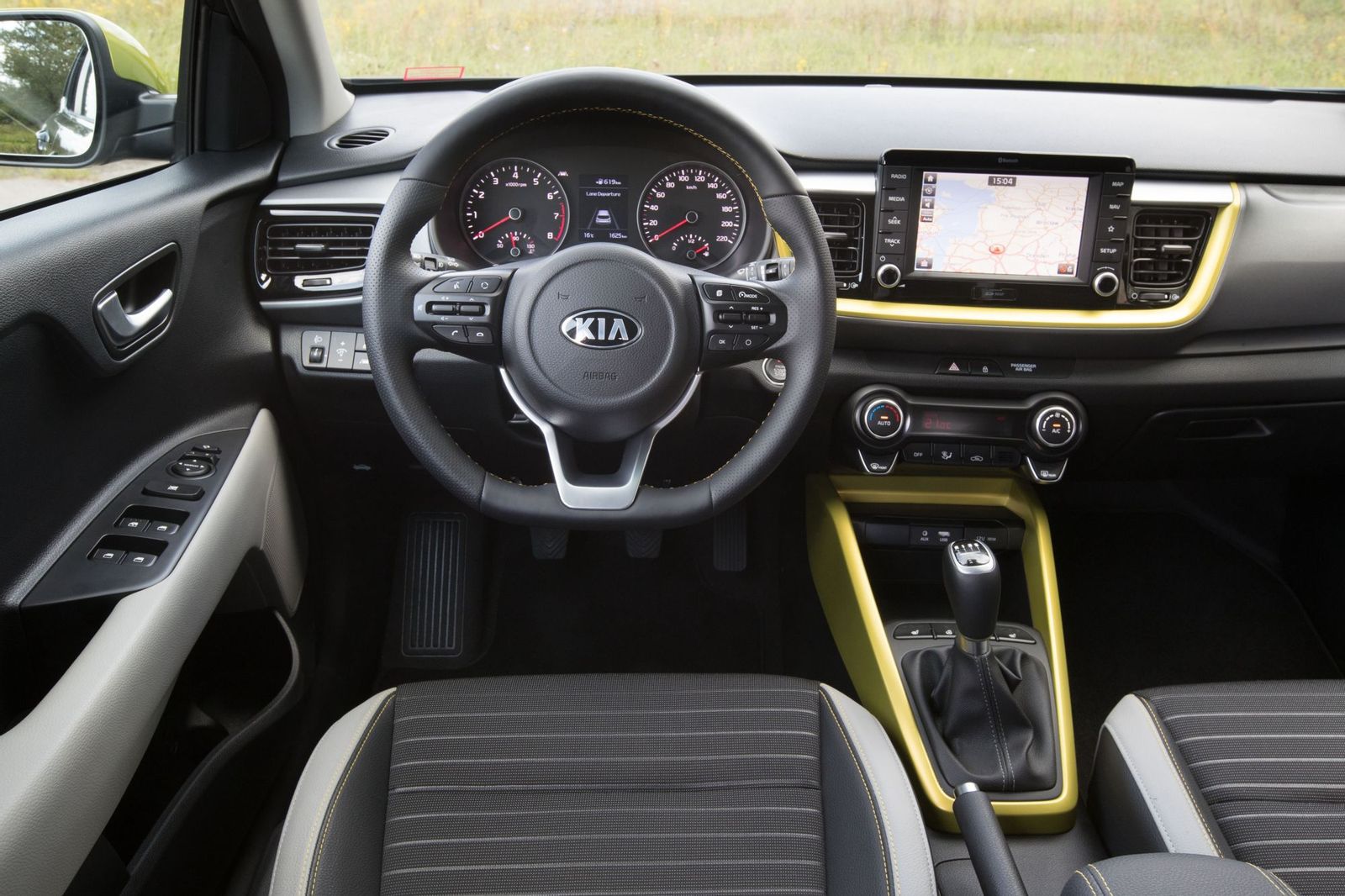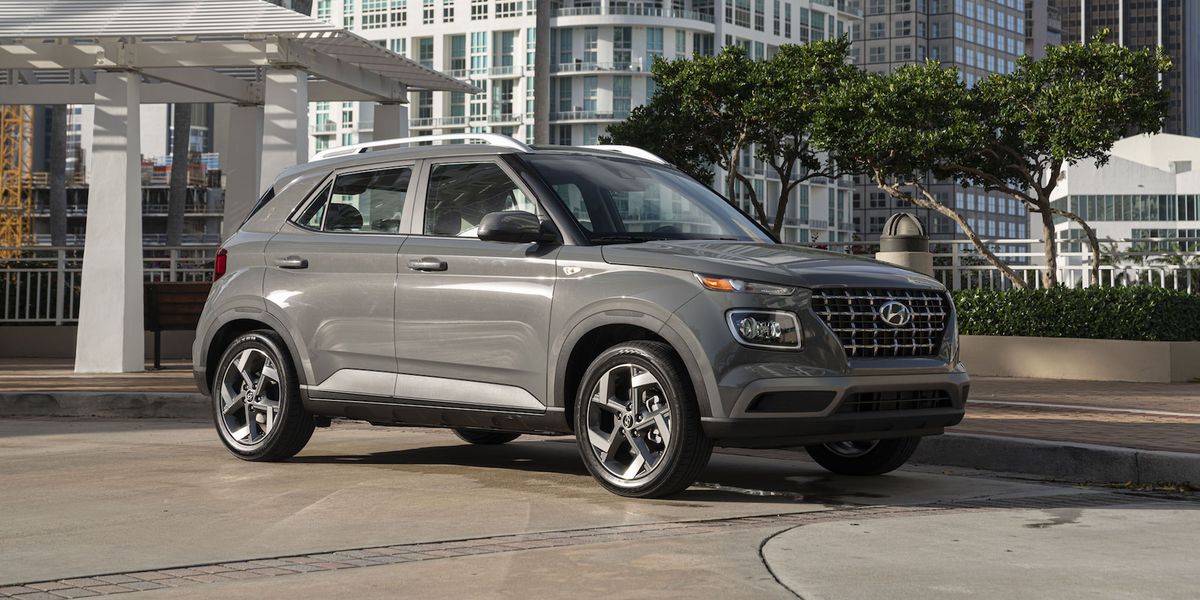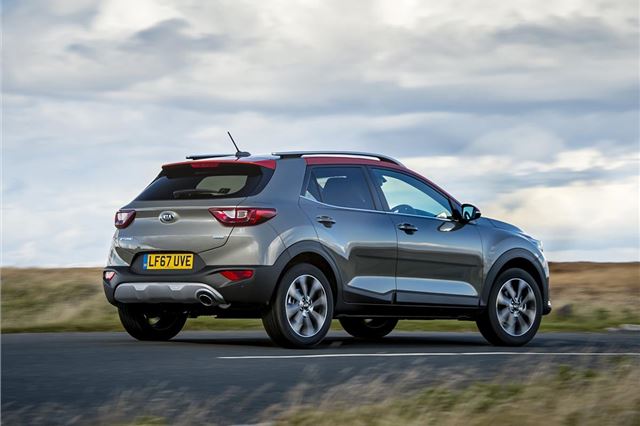- World Auto Evolution
- World automotive news, Auto reviews, vehicle comparisons
- Hyundai Kona vs Kia Stonic: Korean subcompact crossover newcomers head to head
- Video comparison: Kona vs Stonic
- Basic info
- Hyundai Kona
- Kia Stonic
- Exterior dimensions: Hyundai Kona vs Kia Stonic
- Interior dimensions: Hyundai Kona vs Kia Stonic
- Kona vs Stonic luggage compartment
- Hyundai Kona vs Kia Stonic engines
- Performance: Kona vs Stonic
- Hyundai Kona vs Kia Stonic price
- Final comparison: Kona or Stonic? Main differences.
- Сравнение Hyundai Kona и Kia Stonic
- Hyundai Kona
- Kia Stonic
- Hyundai Venue Vs Kia Stonic: Exterior, Interior, Price Comparison & More
- Hyundai Venue Vs Kia Stonic: Exterior
- Hyundai Venue Vs Kia Stonic: Interior
- Hyundai Venue Vs Kia Stonic: Performance & Engine
- Hyundai Venue Vs Kia Stonic: Safety
- Hyundai Venue Vs Kia Stonic: Price Comparison
World Auto Evolution
World automotive news, Auto reviews, vehicle comparisons
Hyundai Kona vs Kia Stonic: Korean subcompact crossover newcomers head to head
While the small SUV market is getting more and more competitive every day, especially in Europe, there are also manufacturers from other countries that want their share. In this article, we chose two South Korean small crossovers and put them side by side, Hyundai Kona vs Kia Stonic.
Video comparison: Kona vs Stonic
Basic info
Hyundai Kona
Manufacturer: Hyundai Motor Company
Production: 2017 – present
Model Years: 2018 – present
Class: subcompact SUV / crossover
Assembly: Ulsan (South Korea)
Kia Stonic
Manufacturer: Kia Motors
Production (second generation): 2017 – present
Model Years: 2018 – present
Class: subcompact SUV / crossover
Assembly: Gwangmyeong (South Korea)
Exterior dimensions: Hyundai Kona vs Kia Stonic
Hyundai Kona vs Kia Stonic: exterior dimension (length, width, height, wheelbase, ground clearance)
Subcompact SUVs are not meant to be large and spacious. In fact, their target audience is probably looking for a small and maneuverable city car with higher seating position. Both Kia Stonic and Hyundai Kona can provide just that. Their length of 164 and 165 inches (around 4,15 meters) guarantees to squeeze them into tightest parking spaces around shopping malls with no problems. For those who still think every inch or centimeter is important than Kona is a bit bigger than Stonic.
Interior dimensions: Hyundai Kona vs Kia Stonic
Hyundai Kona vs Kia Stonic: interior dimensions (legroom, head room, shoulder room)
Those few centimeters difference in the exterior measures is somehow mirrored into the interior dimensions. In most categories, Kona offers a bit more space (shoulder room front & rear, rear legroom), while Kia Stonic has more legroom front and headroom rear. On paper, these differences are really small and almost unnoticeable.
Kona vs Stonic luggage compartment
Hyundai Kona vs Kia Stonic: luggage compartment/cargo volume
If you are going to choose between Kia Stonic and Hyundai Kona based only on the size of the trunk then we tell you that there is no difference. So whether find a different criterion or write down the names of both cars on two sheets of paper and simply draw a lucky prize winner.
Hyundai Kona vs Kia Stonic engines
Hyundai Kona vs Kia Stonic: engines (petrol, diesel, max power, max torque)
The first noticeable difference between Hyundai Kona and Kia Stonic in the engine range. They both offer petrol and diesel versions, but the engines in Hyundai Kona have more power and more max torque compared to the ones in Kia Stonic. A big plus for Kona here, undoubtedly.
In fact, the weakest Kona almost has more power than the most powerful Stonic.
Performance: Kona vs Stonic
Hyundai Kona vs Kia Stonic: performance (top speed, acceleration 0-100 km/h, 0-62 mph)
Stronger engines, of course, are also reflected in better performance.
Therefore, Hyundai Kona achieves much higher top speed and reaches the speed of 100 kilometers per hour (62 miles per hour) much quicker than Stonic. Only if you choose the fastest Stonic and compete in a drag race against the slowest Kona, then you will win.
Hyundai Kona vs Kia Stonic price
Hyundai Kona vs Kia Stonic: price comparison (USA, Germany, UK, France)
Kia has no plans to bring the Stonic to the United States, so the price comparison in the United States is not possible.
In Europe, base model Stonic is generally cheaper than base model Kona. Depending on the country, the difference can be actually over 25 percent. But there are also some countries, where the base model Kona is, in fact, cheaper than Stonic.
Final comparison: Kona or Stonic? Main differences.
Both Stonic and Kona are new and fresh models in the subcompact SUV world. Dimensionally, there are practically no differences. Maybe Kona is a little bit bigger. And we really mean a little bit. The luggage compartment is also practically the same.
We think the biggest advantage of Kona over Stonic is in its engines. More powerful engines are more attractive and can offer higher top speed and quicker acceleration. Especially if you live in the country where there is no difference in base model price.
Сравнение Hyundai Kona и Kia Stonic

По информации из официальных источников, на старте продаж Kia Stonic будет оснащаться дизельным двигателем 1.6 CRDi VGT, а Hyundai Kona – бензиновым 1.6 Т-GDI. Более точную информацию можно будет получить после официального старта продаж, однако предварительное сравнение данных автомобилей можно провести уже сейчас:
Hyundai Kona
Kia Stonic
- Hyundai Kona 1.6 Т-GDI
- Бензиновый турбированный
- Объем: 1,6 л.
- Мощность: 177 л.с.
- 7-ступенчатая роботизированная коробка передач
- Расход: 7,3 л / 100 км.
- Kia Stonic 1.6 CRDi VGT
- Дизельный турбированный
- Объем: 1,6 л.
- Мощность: 128 л.с.
- 7-ступенчатая роботизированная коробка передач
- Расход: 5,9 л / 100 км.
- длина — 4165 мм;
- высота — 1550 мм;
- ширина — 1800 мм;
- колесная база составляет — 2600 мм.
- длина — 4140 мм;
- высота — 1520 мм;
- ширина — 1760 мм;
- колесная база составляет — 2580 мм.
Системы безопасности и оснащение кроссоверов практически полностью повторяют друг друга. Конечно, Hyundai Kona представляет из себя более интересную и “заряженную” версию кроссовера сегмента B-SUV, однако, судя по всему, Kia Stonic сможет найти своих почитателей особенно в Европе, для которых цена и экономичность играют более важную роль, чем наличие полного привода и мощного двигателя.
Hyundai Venue Vs Kia Stonic: Exterior, Interior, Price Comparison & More
In the Philippines, small crossover cars are pretty usual on each highway. Lately, many crossovers from China have also turned up attractive in the Philippines’ automotive market.
Notwithstanding, well-known Korean brands like Hyundai and Kia are no less aggressive in announcing that they join in this highly competitive segment with their rivals.
Hyundai Venue vs Kia Stonic
Hyundai Venue Vs Kia Stonic: Exterior
In terms of exterior, the Hyundai Venue is 4,040 mm x 1,770 mm x 1,565 mm in length, width, and height in terms of dimension. The crossover also comes fitted with a wheelbase of 2,520 mm and a ground clearance of 170 mm.
Meanwhile, the corresponding Kia Stonic parameters are 4,100 mm x 1,735 mm x 1,532 mm, the wheelbase is 2,570 mm, and the ground clearance is 185 mm.
Also, 1.117 kg is the Stonic’s weight. Else, at 1.232 kg, the Hyundai Venue is a little heavier than Stonic.
In short, the Stonic seems to have more ample ground clearance, wheelbase, and higher overall weight. The Hyundai Venue looks taller and broader in return.
Speaking of exterior features, halogen headlights and LED taillights are available in both models. Nevertheless, the Kia Stonic comes with 16-inch alloy wheels, fog lights, and rails for the roof, while the Venue has only 15-inch wheels with an extra repeater.
Hyundai Venue Vs Kia Stonic: Interior
Overall, up to five individuals can accommodate any of these two Korean crossovers. The color gamut in the entire cabin is usually subject to dark colors.
Moreover, the interior styling of the Stonic seems more angular than that of the Venue. The Kia Stonic is uniquely fitted with a flat-bottom steering wheel and has a default capacity of 352 liters in the storage compartment.
The Venue has a steering wheel that is more typically rounded and has a much greater storage capacity — 355 liters. Owing to the ability to change tilt and glass easier, the Venue has greater steering power.
One remarkable point about the Stonic EX, which the Hyundai Venue does not have, is the cruise control system. Nonetheless, Venue’s electric folding rearview mirror is available, but it does not exist on the Kia crossover.
You could easily change both cars’ drivers’ seats. The power start button, 8-inch touchscreen, Bluetooth, USB port, and 12-volt accessory socket are available on both items.
Hyundai Venue Vs Kia Stonic: Performance & Engine
With a 1.6-liter inline 4-cylinder petrol engine using an automatic 6-speed torque converter type transmission, the Venue GL can produce 151 Nm of torque and 121 hp of maximum power.
On the other side, the Kia is fitted with a six-speed dual-clutch automatic transmission (DCT) and a four-cylinder, 1.4-liter inline petrol engine that can generate 132 Nm torque and up to 97 hp of power.
Based on these capacity parameters, it’s possible to conclude that the Stonic is about 100 kg lighter than the Venue, but the Stonic is not as strong as the Venue.
Hyundai Venue Vs Kia Stonic: Safety
Both Korean cars come with dual front airbags, stability control and ISOFIX, electronic brake-force delivery antilock brakes, and rear parking cameras. Notwithstanding, the Stonic has rear parking sensors helping with steep exit, while the Venue GL does not. In return, the Venue excels at possessing traction control.
The Stonic has rear parking sensors helping with steep exit
Hyundai Venue Vs Kia Stonic: Price Comparison
Hyundai Venue Variants
